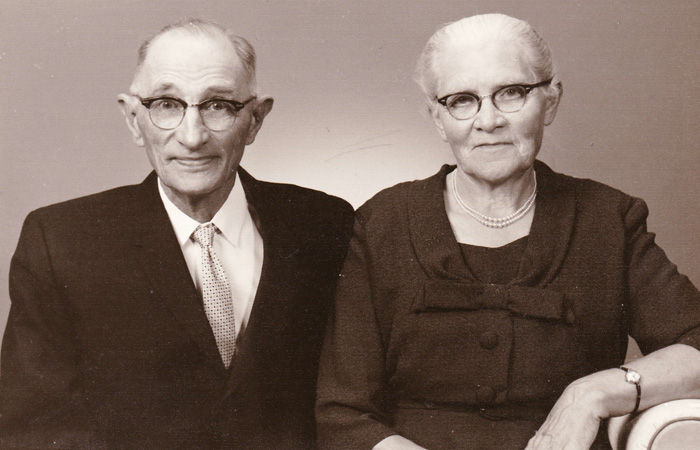Village News
Mexico or Canada?

Mennonite Heritage Village (MHV) recently accepted a new Mennonite-made wall clock and a batch of family immigration documents into our artefact collection. According to the donor, this clock was given to Abraham and Elisabeth (Goerzen) Wiens as a wedding gift in 1913. In 1925, Abraham, Elisabeth, their children, and Elisabeth’s parents emigrated from the Soviet Union to escape the communist regime. They made their way to Mexico but then stayed there for only one year before migrating to Canada. This family’s immigration documents, along with their clock, help MHV tell the broader story of a small group of Mennonites who left the Soviet Union for Mexico for a short time before finding a permanent home in Canada.
Between 1923 and 1926, approximately two hundred Mennonite families migrated from the Soviet Union to Mexico. Although Canada was the first choice of destination for many of the emigrants, Mexico had its own benefits. Climate, of course, was a factor. The Mennonites had lived in the area we know today as Ukraine, where the weather was much warmer than the cold Manitoba winters. Additionally, other Mennonite groups had established colonies in Mexico, so there was already a Mennonite presence in the country. Finally, medical examinations were not as strict in Mexico as they were for those who wanted to settle in Canada, thus making migration to Mexico easier.
Our recently donated documents superbly illustrate the migration story of many of these two hundred Mennonite families. One of these documents is a certificate allowing the Wiens family to leave the USSR for Mexico. The certificate states: “This is to certify that the bearer of this Certificate Abraham Jacob Wiens… is a Mennonite, a bona-fide farmer, member of the Union of Citizens of Dutch Lineage in the Ukraine accompanied by his family consisting of: Elisabeth, Peter, Elisabeth, Maria, Abraham… is proceeding to Mexico as farmer… It is also hereby certified that neither this man nor his family will become public charges if allowed to land in Mexico by the Mexican Immigration Authorities.” The certificate is dated February 22, 1925.
In under a year, the Wiens family had decided that Mexico would not work as their permanent home. According to our donor, the heat of the Mexican climate did not agree with Elisabeth. So the family was given permission to try their luck in Canada.
The second letter was issued by the Canadian Department of Immigration and Colonization on October 13, 1925. The letter states that it approves the application submitted by Abraham Wiens for permission for him and his family to migrate to Canada. The Department further stated that “it will be necessary, however, that the said Abraham Jacob Wiens, his wife Elisabeth, and children… shall pass medical inspection and otherwise comply with the requirements of the Canadian Immigration Act…” The family found a farm in McAuley, Manitoba, where Abraham’s brothers had already established their own farms.
Not all Mennonite families were so lucky. As is suggested by the sections quoted here, Mexican and Canadian governments were concerned with the capabilities and health of Mennonite families and individuals wishing to immigrate. Canada in particular used medical inspections to limit immigration, which may have been the reason that a family settled in Mexico rather than Canada. These conditions did not just apply to the Mennonites but also to many, if not all, immigrant groups in the early twentieth century. Governments did not want to be burdened with residents who would not be able to contribute to the economy or would be a medical burden on the country. Throughout other archival and historical sources, one can find examples of families who were separated for these reasons, many of which never saw their other family members again.
The Wiens family artefacts remind us of the uncertainty many Mennonites faced during the 1920s. Families were unsure if they should leave the Soviet Union and unsure of where they would go if they were actually granted permission to immigrate. They could not know in advance what was in store for them in the new place they would call home, or what their lives would become in the following years. Documents such as these shed light on what must have been a very emotional experience for many Mennonite families. We are grateful to be part of their preservation.




